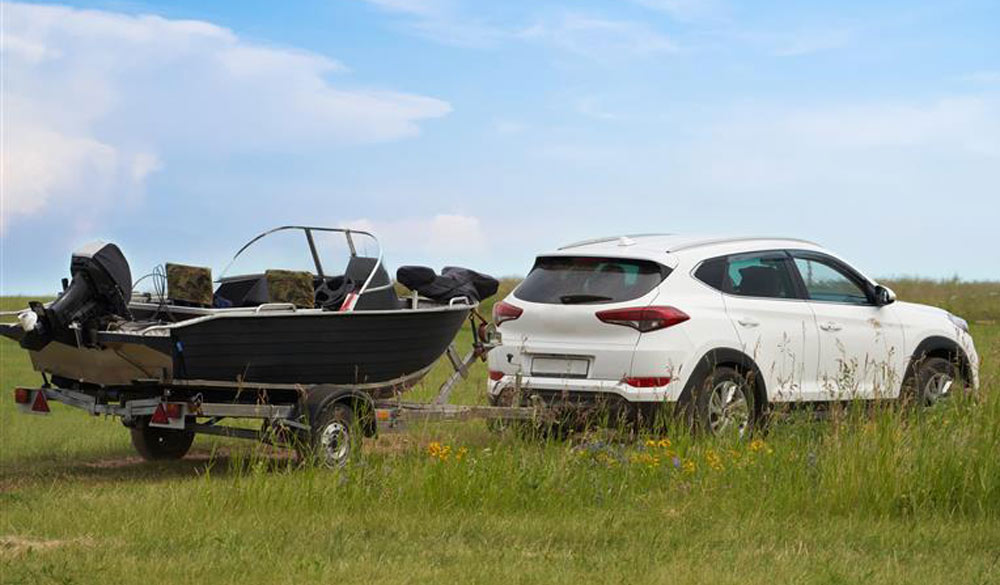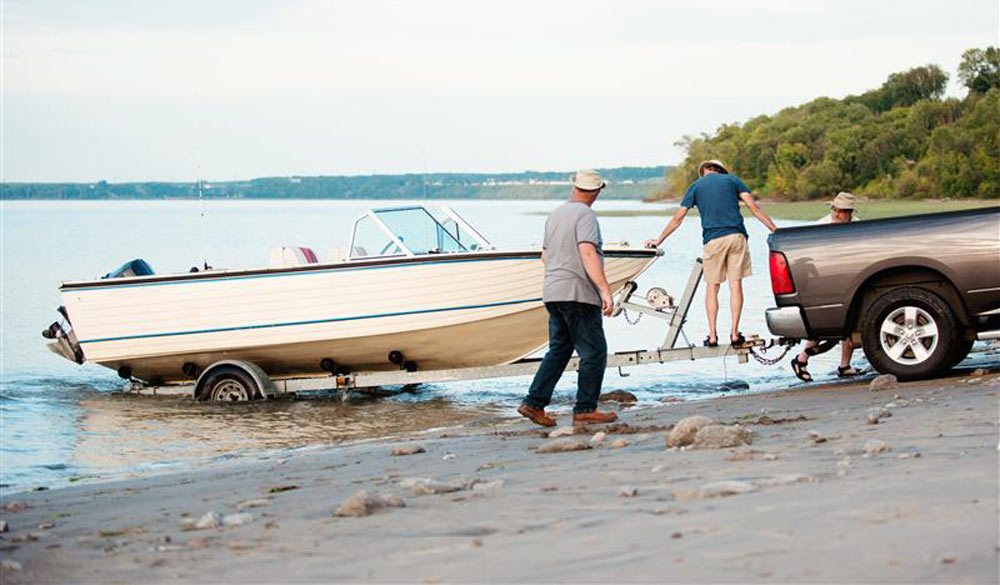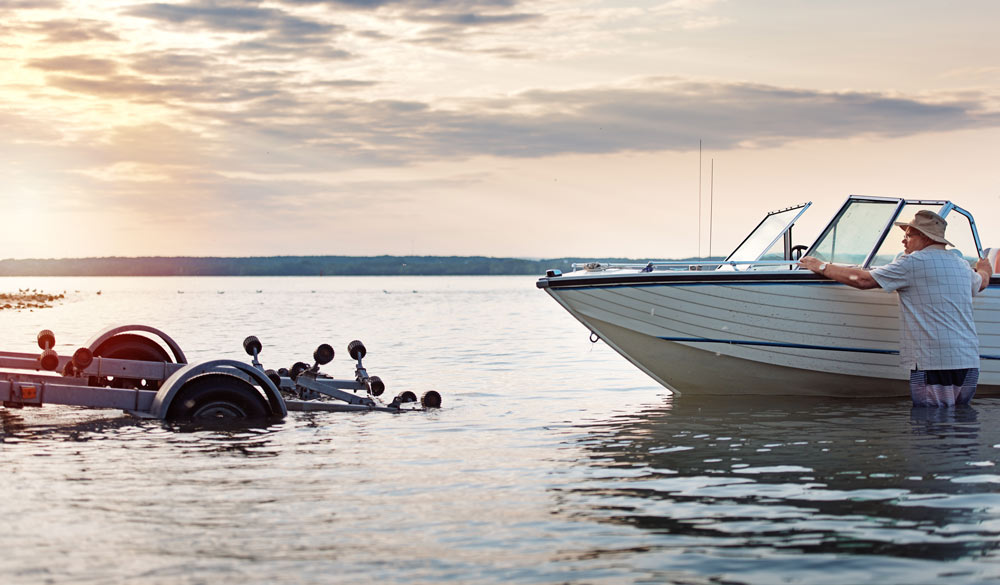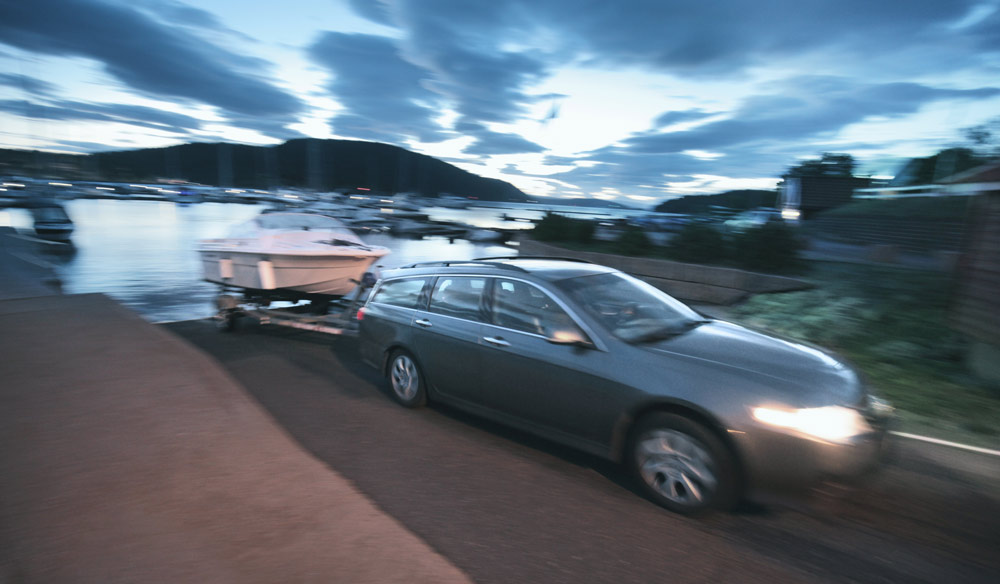How to safely tow a boat

Whether you’re heading away for a weekend getaway or transporting your boat for maintenance, ensuring a safe and legal tow is crucial to protect both your boat and everyone on the road.
Bishop Skinner Marine considers the essential steps to safely tow a boat, from choosing the right equipment to proper driving techniques.
1. Choose the right tow vehicle and trailer
Before you hit the road, ensure your vehicle is capable of towing your boat and advise your vehicle insurer that you will be towing. Check the following:
Towing capacity – Your vehicle should have a towing capacity that exceeds the weight of your boat, trailer, and any additional gear.
Trailer compatibility – Use a trailer that matches your boat’s size and weight. If the total weight of the boat and trailer is under 750kg you can use a trailer without its own brakes (unbraked), if the weight exceeds 750kg then you need to use a trailer with its own braking system (braked trailer).
Hitch and ball mount – Ensure the hitch is rated for your load and securely attached to your vehicle. Check your insurers requirements for securing an unattended trailer. Many require a hitch lock or wheel clamp to be used.

2. Securely load and attach the boat
Properly securing your boat to the trailer prevents shifting or detachment while driving.
- Balance the load – The boat should sit evenly on the trailer, with about 10% of its weight resting on the hitch.
- Use safety straps – Secure the boat with strong straps at the bow and stern to prevent movement.
- Check the winch and bow stop – Ensure that any winch is locked, and the bow stop is correctly positioned to keep the boat from rolling.
- Ancillary items – Ensure that masts, engines, and equipment such as covers are properly secured to the boat or trailer and that laws relating to maximum overhangs or marking projections are adhered to.

3. Inspect your equipment before driving
A thorough pre-trip inspection helps prevent accidents. Before leaving, check:
- Trailer lights and brakes – Test brake lights, indicators, and hazard lights to ensure visibility.
- Tire pressure and condition – Inflate tires to the recommended pressure and check for any wear or damage.
- Safety chains and breakaway cable – For unbraked trailers under 750kg you must have a secondary coupling such as safety chains. You should cross safety chains under the hitch in an "X" pattern. When using braked trailers you must use a breakaway cable, this will shear and then engage the trailer brakes if the trailer detaches.
- General condition - Keep your trailer in good condition. Inspect the trailer and axle for excessive corrosion and be alert to noisy wheel bearings.

4. Drive cautiously and adjust for towing
Towing a boat changes the way your vehicle handles, so adjust your driving accordingly:
- Allow for extra stopping distance – Braking takes longer when towing, so increase your following distance.
- Make wider turns – Trailers track inside your vehicle’s turn, so take wider turns to avoid curbs or obstacles.
- Consider your height – The trailer and boat may be taller than your vehicle, so pay attention to height restrictions and obstacles such as low hanging trees.
- Watch for swaying – If the trailer begins to sway, ease off the accelerator and steer straight – never overcorrect.
- Use lower gears on hills – Reduce strain on your brakes when going downhill by shifting to a lower gear.
- Keep it secure – If the vehicle and trailer is parked out of sight or left unattended, take appropriate precautions to keep it secure, for example by fitting a wheel clamp or taking other measures that may be imposed by your insurers.

Whilst towing a vessel, boat insurance would provide cover for both your vessel and trailer (as long as your trailer is listed on your policy schedule). Any damage caused to a third party or third-party property, such as a car would be covered by the towing vehicles insurance. For any boat insurance queries or to arrange cover, visit Bishop Skinner Marine or call 0330 818 2355.
This is a marketing communication.
